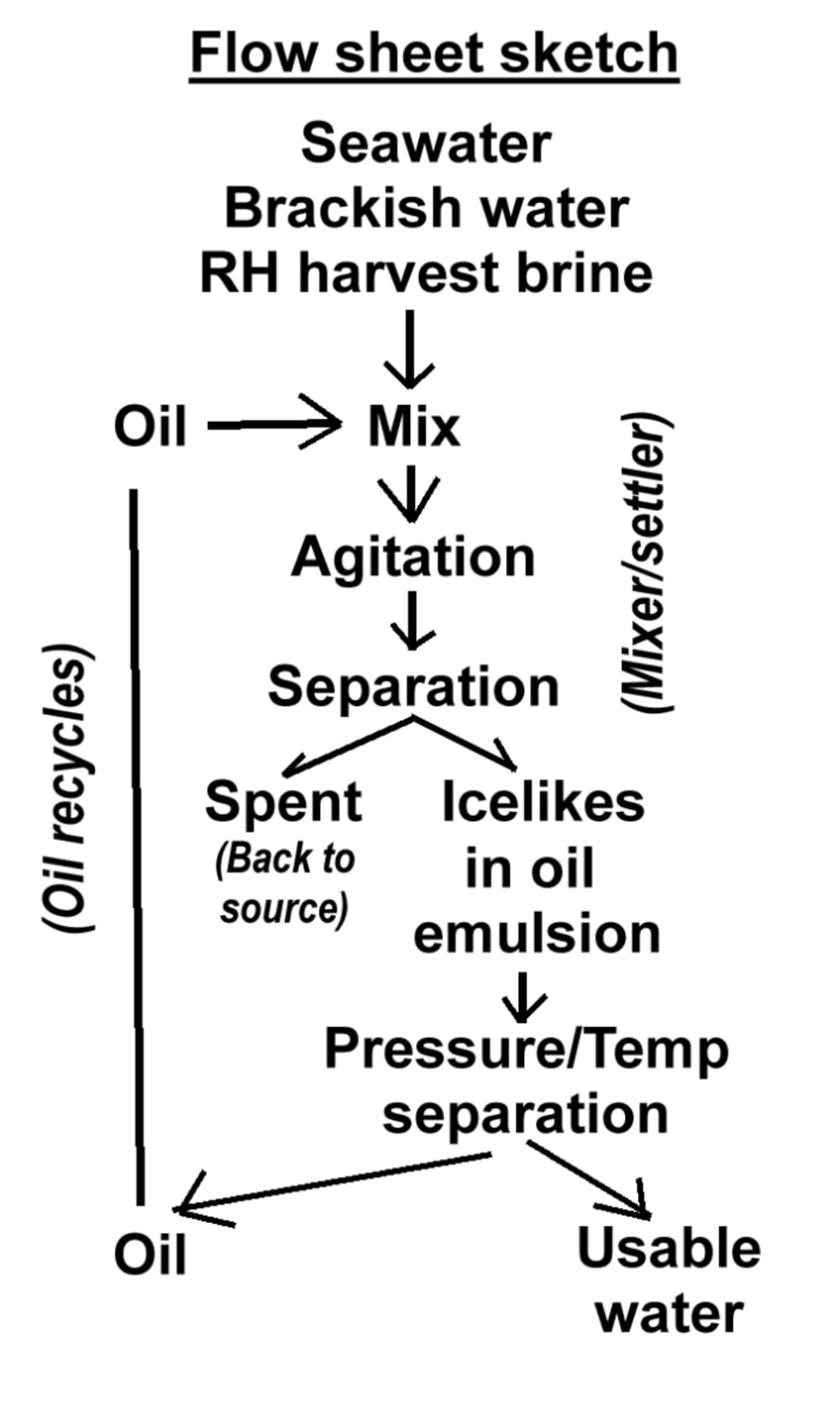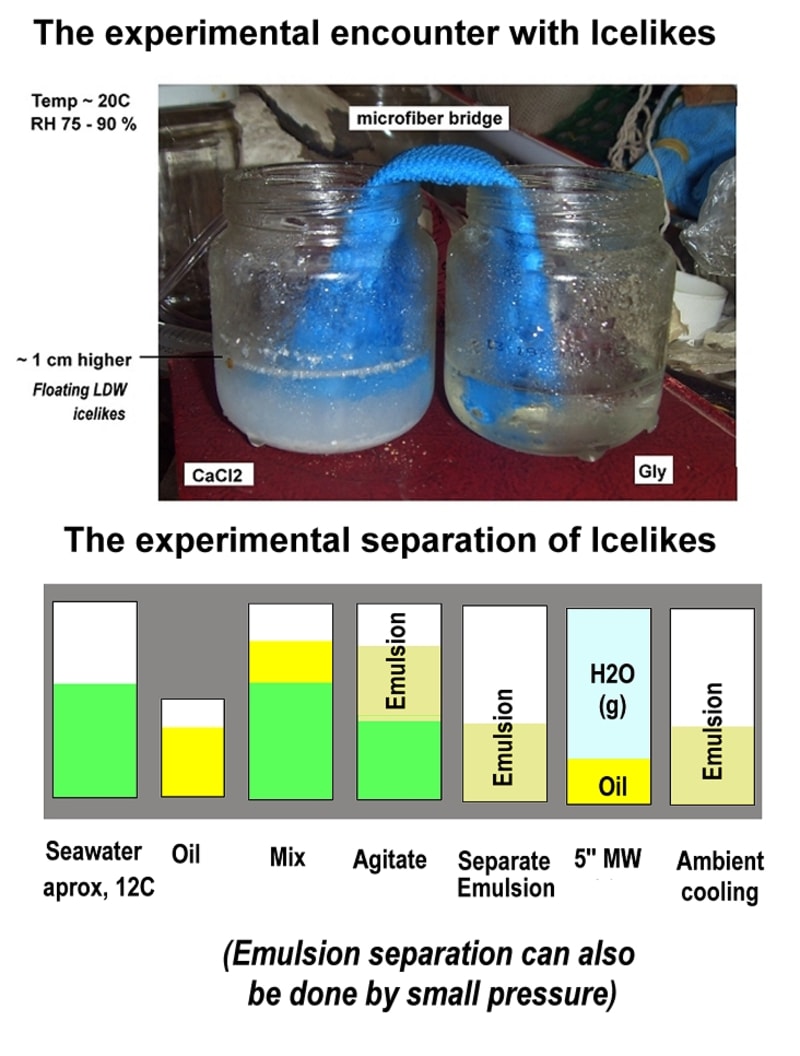This preliminary design is based in our aim to irrigate the Peruvian coastal desert, via desalting sea/brackish/RH water captured in brines and/or preserving seasonal water were evapotranspiration is very high. All these are salty solutions that need to be convertedt to usable water. All this can be done by current RO or distillation but both are energy intensive.
Our experimental work has confirmed previous scientific work, that low density water (LDW) exists and is polymeric, lighter and, believe or not, kind of hydrophobic. In simple terms it is “icelike.” For simplicity's sake, we consider that in water schemes, the triple point is not a “point” but an area which is icelike with very small energy; sublimes (as snow or dew does) melts (as “liquid” water) of crystallize in ice. This is a transgressive concept that i.e. can explain why it is impossible to have “liquid” water in Mars.
After some interesting “deviations” in our RH harvesting efficiency experiments; we put two intercommunicating vessels by a microfiber capillarity bridge. One with CaCl2 and the other with Glycerol and both vessels absorbing atmosphere humidity. As you can see in the attached photo there was more than 1 cm height difference. On a closer look that height difference was due to some small kind of icebergs that where floating in the CaCl vessel. We started to experiment on that supposedly “unusual ehavior” that we have repeated hundred of times.They were no solid, no liquid, no gas.
The next step was to find how we can extract these “icelikes” and separate them from bulk water. We needed an ismiscible liquid to do the job . We chose vegetable oil (sunflower, soybean) because they have a lower vapor pressure than bulk water and is imiscible...and it worked! We did some literature digging and acknowledge that common “bulk” water may contain up to 40% LDW at ambient temperatures.
This preliminary design is therefore based in that it would be possible to obtain less salty water, suitable for human or agro use in desert, by using low salt tolerant species like succulents (Aloe, Opuntia,etc) by a simple vapor pressure (or water activity) system using simple very low energy inputs.
The design is very rough terms consists in making an emulsion from sea/brackish water using low vapor pressure oil to make an emulsion that can be separated from the bulk water by small pressure/heat energy units, to make usable water.
The capital items needed are some simple pumps, mixed /settler separators (very used in mining) and an emulsion water/oil separator like compressed pumping. Our guesstimate is that, including amortization; usable unsalted water can be produced at ~ 1KWH/M3, If that can work, at a big scale; more water resources, at low cost will be possible, in seaside, atmospheric water and brackish water, that abound in our planet. It is a very simple approach to the challenge of the century...water as a human right and not a commodity.
Like this entry?
-
About the Entrant
- Name:Pedro Flecha
- Type of entry:individual
- Software used for this entry:Excell, Open office
- Patent status:none





